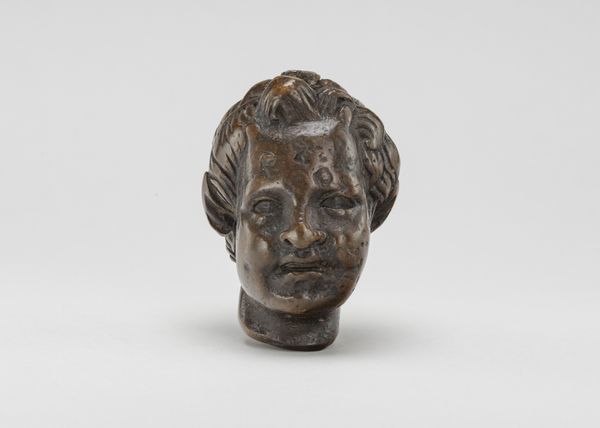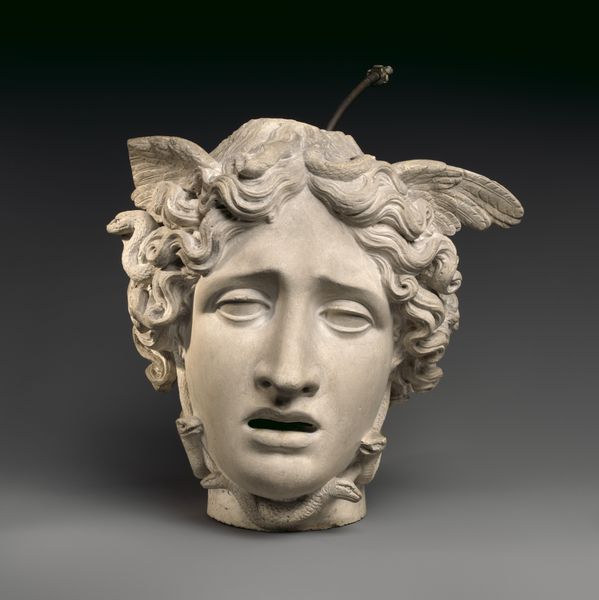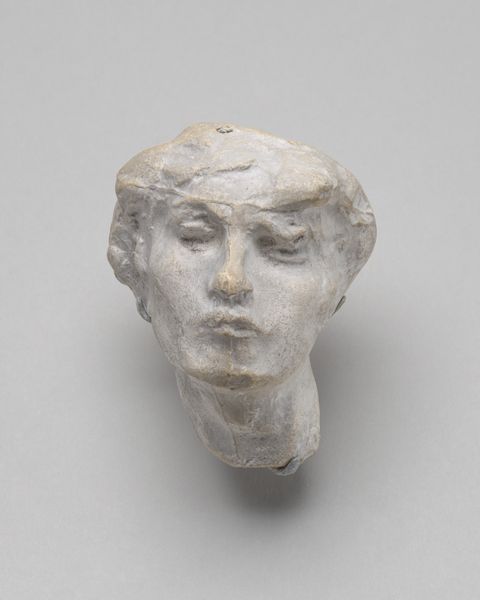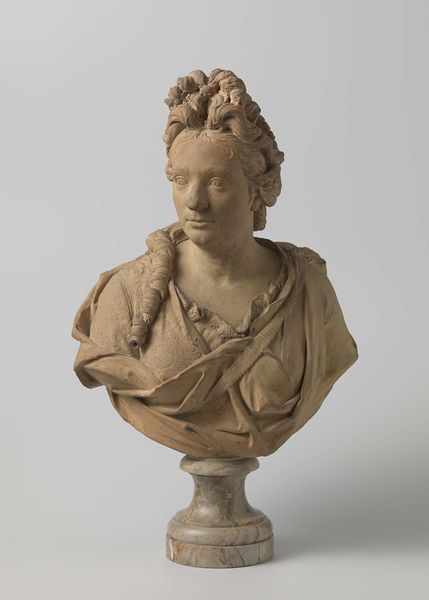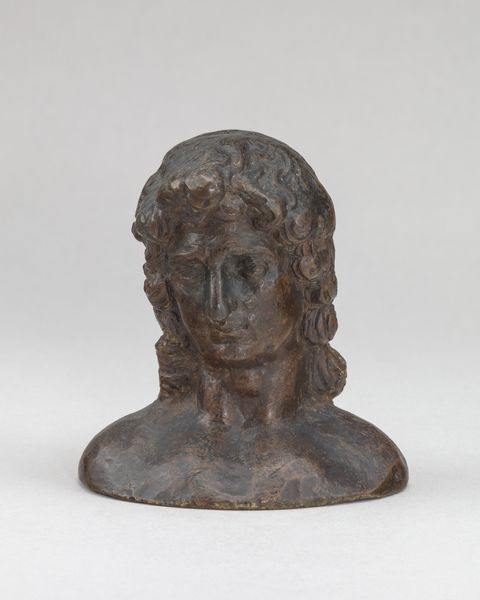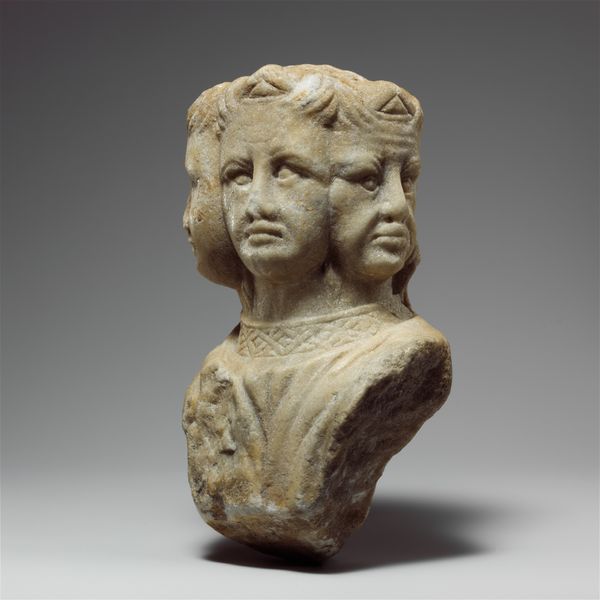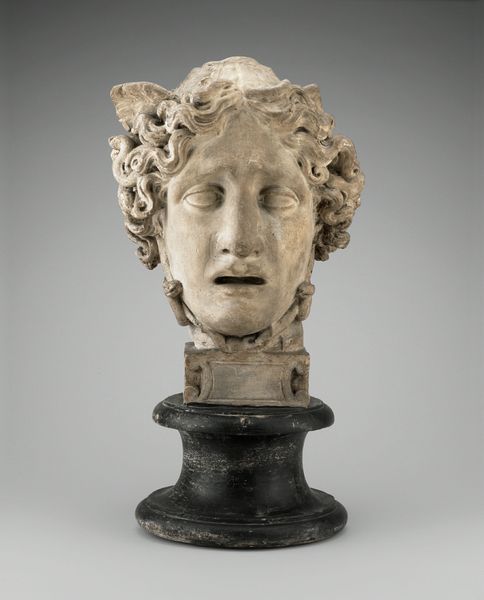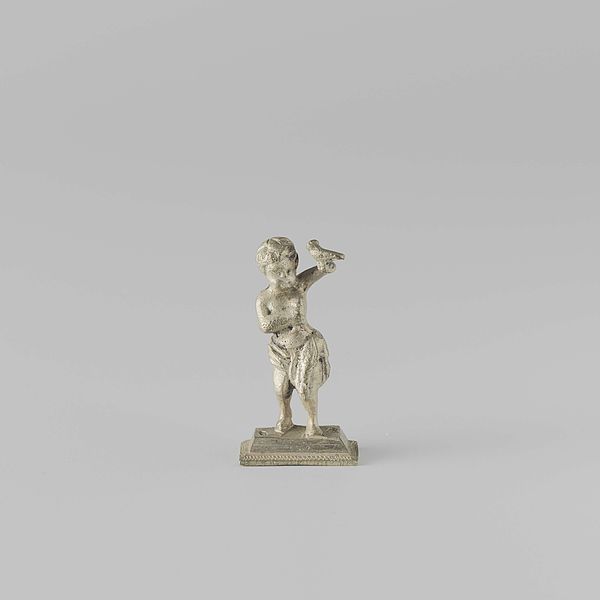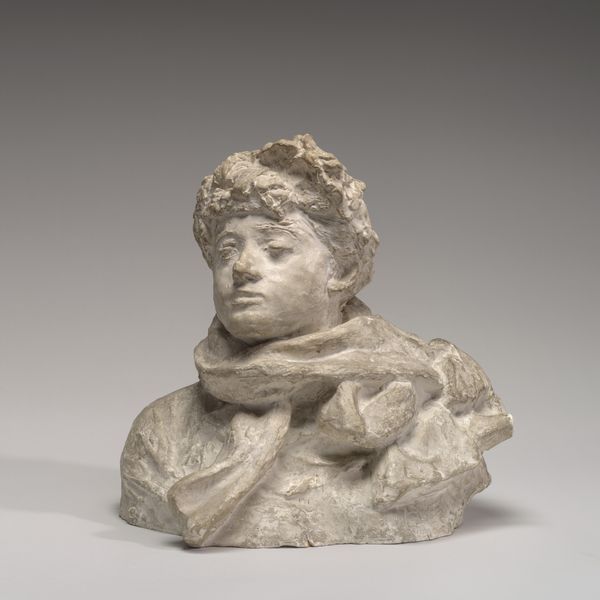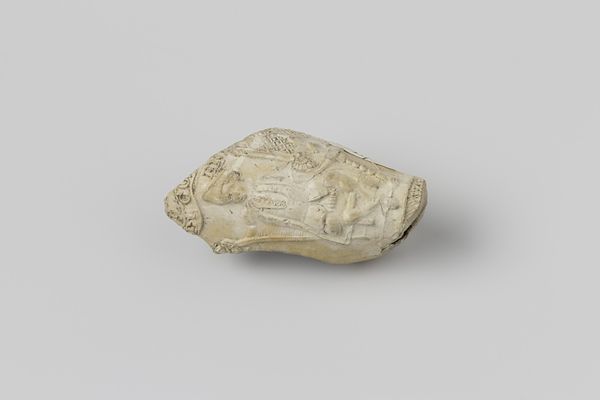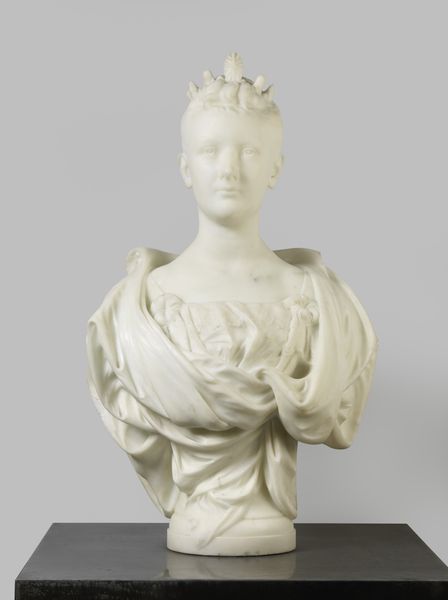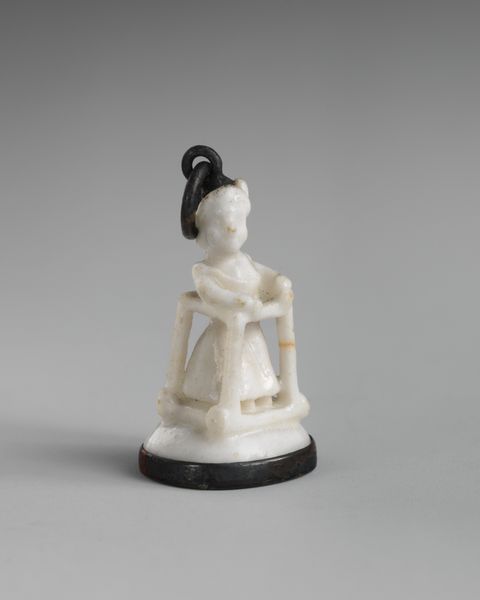
Dimensions: height 3.5 cm, width 3.7 cm, depth 3.2 cm
Copyright: Rijks Museum: Open Domain
Curator: Eugène Lacomblé’s sculpture, titled "Onderdeel van Synagoge (?)", dates from approximately 1828 to 1905. It's rendered in marble and thought to be part of a synagogue. Editor: It feels incomplete, doesn't it? Like a fragment unearthed from a ruin. The subdued coloration of the marble lends it an ancient quality, a kind of melancholic dignity. Curator: Absolutely. Its incomplete state makes us question its past, which ties into a broader discourse about the social function of synagogues. Where did this piece originate? Who did it represent? What historical events led to its fragmentation? Editor: Considering the materiality, the carving suggests considerable skill and labor. I wonder about the stonemasons, their guild affiliations, the availability of marble—these details speak volumes about the economic and artistic environment where it was produced. How many hands shaped it? What were their wages, what were their lives like? Curator: Precisely! The neoclassical style is unmistakable. I’d say the figure itself recalls depictions of ancient Greek goddesses, perhaps repurposed or reinterpreted within a Jewish context. This merging of aesthetic and religious symbolism opens pathways to think about identity. Was it designed to show assimilation? Or appropriation? Editor: It is compelling how the material, the cool weight of the marble in your hands, forces you to confront the process of creation and destruction. It went from raw block, carefully sculpted to a part of the building, then fragment; its journey speaks to broader narratives of building, worship and demolition of cultural institutions. Curator: Its beauty lies in how this fractured marble invokes so many themes—cultural exchange, craftsmanship, and historical trauma. It prompts reflections about the stories embedded in lost and recovered objects. Editor: Indeed. By engaging with its materiality and acknowledging all possible narratives intertwined with social events, the fragment encourages us to value labor in cultural heritage.
Comments
No comments
Be the first to comment and join the conversation on the ultimate creative platform.
